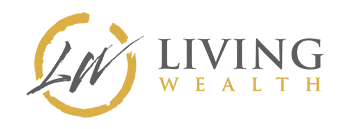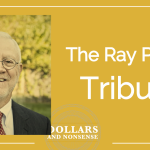In this podcast episode, we discuss exactly how to build a proper infinite banking policy. We also answer the most common questions that we get about policy design.
If you’re new to infinite banking or researching this concept, there’s so much that you can soak up. Nelson used to say, “There’s a lot of noise in the financial world.”
There are always people trying to buy your attention. Those people say they know something that other people don’t. This state applies to infinite banking. There are many people out there who say they finally figured out how to do it the best. There are people out there who say it never works for anybody; don’t touch it.
Today, we’re taking the discussion back to the basics: the foundation of what makes a proper Nelson Nash, infinite banking policy. These are the aspects that need to be the core. We’re going to share what you need to do to produce the best result. Simpler usually is better, and simpler puts you in more control. Get ready to learn how to maximize the infinite banking concept and do what’s best.
Building a Successful Infinite Banking Policy:
- Understanding the death benefit is great, but not the real point
- What is BOLI (Bank Owned Life Insurance) and why do the banks own so much
- Where to start
- Paid-Up Addition Rider
- Whether to put a term rider on the policy
- Tax considerations and setting yourself up to give away money to the government
- The 7-Pay Test
- The nuts and bolts of dollars and sense
Episode Resources:
- Gain access to our Secret Banking Masterclass now FREE to listeners of the podcast here now
- What is Infinite Banking
- Why Dave Ramsey is Wrong episode
Transcript: How to Build a Successful Infinite Banking Policy Easily
Nate: In this episode, we discuss exactly how to build a proper infinite banking policy, and we answer the most common questions that we get about policy design. She’s Holly, and she helps people find financial freedom.
Holly: He’s Nate. He makes sense out of money. This is Dollars and Nonsense. If you follow the herd, you will be slaughtered.
Nate: If you’re new to infinite banking, or if you’re just starting doing research on this concept, there’s so much that you can soak in in all of the online world and YouTube and Google searching and whatnot. What Nelson, the phrase he would use is, “There’s a lot of noise in the financial world.” There’s always people trying to buy your attention, say they know something that other people don’t, or they got some special new thing. And that definitely applies to infinite banking. There’s a lot of people out there who say they finally figured out how to do it the best. There’s people out there who say it never works for anybody; don’t touch it. A lot of noise out there, whether to put a term rider on the policy or whether or not to with all these bells and whistles.
What we wanted to do today was get back to the basics, the foundation of what makes a proper Nelson Nash, infinite banking policy, because that needs to be the core … all these crazy things that people think about they can work for some, but I don’t think it should be for everyone. Most people, just the basic understanding of what you need is going to produce the best result. Simpler is normally better, and simpler puts you in more control. That’s what we wanted to talk about today, and we’re going to dive into how to build a policy to maximize the infinite banking concept and do what’s best.
I thought we could start by mentioning some things. A lot of the naysayers, especially just the generic ones like a Dave Ramsey, who says don’t use a whole life insurance, they have complaints about life insurance policies, but you and I, Holly would say that we think they’re pretty misled, or maybe we would even agree on them for the generic old policy.
Holly: Yeah. I think that a lot of times when Dave Ramsey or a financial professional is looking at even a traditional policy or a universal policy, when you look at it and the way it’s designed in most agencies [inaudible 00:02:32] design it, it’s not a great policy. It is primarily set basically for death benefit. And so you see zeros in columns where there is no cash value for a lot of years. And what happens is it doesn’t look like a good policy because basically the only benefit of it is that when you graduate from the earth, somebody gets some money.
Nate: Yeah, you get a big death benefit. You’re exactly right. The old school, most simple way to build policy is just, what’s called base premium. Put all your money into this policy for the whole life insurance element, buys a ton of death benefit, it does build cash but it takes forever. And it doesn’t never look really that great. So I guess, Dave and me would agree. The average Joe, you go down to the street corner lot and you just walk into an insurance agent, ask for a whole life insurance policy, it is not going to look great for cash value. It has to be built in this specific way in order to really flush it with cash and how to really work well.
That brings us to a common question that you would want to ask is … you should probably ask this to yourself. Some people, they think that they do want a death benefit. We’re not against … death benefit is great. You’re going to get a death benefit with this policy. But the question you need to ask yourself in every walk of life, what’s more important to you; cash or death benefit? I have yet to find a single individual, whether there’s a 20 year old with a new family or an 80 year old who’s getting closer and closer to graduating this world, none of them say, I think about dying all the time. But everyday what do we wake up and think about? Money, yeah, cash. That’s always going through our mind.
And so when you’re building a policy, the best way to do it is not to have it focus on death benefit, but it needs to focus on cash value. That is the most important element for a policy, especially for the becoming your own banker strategy.
Holly: Well, and if you think of it, it’s called the infinite banking concept, and you have to view that as it is a bank; you are starting your own bank. And what does a bank rely on? A bank relies on cash. A bank doesn’t rely on a death benefit to give them money. They rely on the deposits that are taking place. And so that’s where really that difference comes in. And it’s a change in your mindset of, yes, you can still get death benefit because that’s a bonus, we like to say, or the icing on the cake, but you need money today, you need money tomorrow and you’re going to need money in the future to live on. That’s the bottom line for anybody, regardless of ages. As long as you’re still living, we need cash today.
That’s the importance in the design of the policy where Nate and I would agree with Dave Ramsey that, hey, if it’s a traditional policy and it’s just base premium, which is just paying for death benefit, you’re right, it doesn’t look so great. That’s what we want to talk to you guys about. How do you get that cash, Nate, into a policy that’s essential for the design and avoid the noise?
Nate: Exactly. I think it’s funny that you said it’s called the infinite banking concept. Banks buy this stuff all the time and they don’t buy it for death benefit. So the big Bank of America, Wells Fargo, Chase, any bank, they own what’s called BOLI, bank owned life insurance. Those policies do have death elements, but they are bought the same way that we would suggest you buy it.
I find it surprising how many clients I run into that may already have policies that they thought were infinite banking policies. They send them to you and they’re like, “This is not the way Nelson had intended.” I mean, it may be with a mutual company, but once again, there’s a lot of base premium, very little PUA rider. And most of the time when you see that happen, it’s probably because an agent wanted to get a higher commission than what … Because the death benefit, the base premium is really what drives commissions to an agent. It is true that as agents, we take a huge reduction in commission in order to sell policies that are very cash value centric. And some agents just aren’t willing to make that hit.
I mean, it’s amazing to me that you’ll see policies like this, and it’s like this is banking and it needs to be cash value. Death benefit is important, but this creeps in this human life value discussion. Or, if you make X amount, you should really own this [inaudible 00:06:52]. Let’s solve for that first, and then if you have anything left, we’ll add it to the cash. Cash value should always be the focus when dealing with infinite banking concept. And we can transition; how do we put cash value into a policy?
Holly: It’s called a rider. It’s one of the bells and whistles, but this is what you do want on your policy, and it’s called a Paid-Up Addition Rider. It is what generates cash. It is maximum cash, minimum death benefit. So it’s buying you a little bit of death benefit, but it’s giving you cash for you to use today. And I think that’s the key is that cash. And like Nate said, you can have an infinite banking policy, but it’s a whole lot of base premium and no cash value, or the minimum cash you can have. We want to try and get to a place where you actually have a maximum cash and a minimum death benefit.
Nate: It’s like a teeter-totter.
Holly: [crosstalk 00:00:07:46].
Nate: Yeah, you can weigh the death benefit. You have a lot of death benefit, but not as much cash value or you can weigh the cash value and you won’t have as much death benefit.
So if I came in and I said, “I’m going to put in $10,000 a year of premium,” that’s a nice, easy round number. We can put it all toward the base premium. It will build cash over time. But this is the policy that even Dave Ramsey has an issue with that we would agree with, is that it takes forever to get anything. The first two, three years, you probably have $0 of cash value, and it takes forever for it to really produce much and it never really takes off. But if we took that same 10,000 and we started to split it up where we don’t put all of it towards the base premium of a policy, we put a vast majority of it to the Paid-Up Addition’s Rider, suddenly our death benefit of course will go down, but the amount of cash value per premium dollar is going to go way up.
What you’ll see are very common is put $3000 to $4,000 of premium to the base premium and six to $7,000 in that scenario toward the Paid-Up Addition Rider. Now we’re stuffing … The PUA rider is just like a cash rider. It just stuffs cash value into a policy. It’s a fancy word. It also does boost your death benefit as well every time you make a premium payment.
I think we’ve talked about that on the podcast before. We can go into more detail another time.
Announcer: Have you ever wondered how to stop worrying and just make and keep more of your money?
We believe in challenging the status quo. We believe in divine, conventional wealth tools while maintaining traditional values. After all, most of those conventional tools only ever seem to make someone else on the inner circle, rich. You can become debt free, in control, secure, and achieve financial significance. Private family financing can be used in your life and even your business.
Let us help set you free from worry. Visit livingwealth.com/freedom to receive your free copy of the Tree of Wealth. You’ll learn about the tools banks themselves use and rarely speak about openly. These are the strategies used to launch Disney, JCPennys and countless successful families. For more than 46 years, Living Wealth has focused on treating clients with respect and honesty while helping them achieve financial freedom.
Learn how to turn your hard work into significance. Visit livingwell.com/freedom to instantly receive your free copy of the Tree of Wealth. You’ll be enabled to have cash today and in the future.
It’s more than mere infinite banking; it’s private family financing. Don’t let banks and Wall Street dictate your financial future. Go to livingwealth.com/freedom to instantly receive your free copy of the Tree of Wealth.
Now back to Nate and Holly.
Nate: So Holly, why can’t we just put all the money toward the Paid-Up Addition’s Rider and not even worry about any death benefit or base premium?
Holly: The main reason is it’s called a modified endowment contract. It creates a taxable event. Basically what you’ve done is give the policy so much cash that now it’s taxable versus the death benefit. You have to have a balance. I guess the thing is, is that we want to get close to that modified endowment contract limit, but we don’t want to exceed the limit on the modified endowment contract, because we don’t want to create a policy that you have to pay cash on.
Nate: Taxes on it, right?
Holly: Yeah. The taxes on, like Nate said, sorry, I said cash on. I feel like-
Nate: You do want a policy you pay cash on.
Holly: [inaudible 00:11:27]. You do want a policy you pay cash on-
Nate: But not taxes.
Holly: You don’t want a policy you pay taxes on because then you defeated the whole purpose of starting the policy, which is tax free growth. I think the other thing is, is that when you’re using it just as a Paid-Up Addition Rider, it just becomes a single premium payment really. You’re making really just a premium payment to get all cash and no death benefit, and the policy can’t survive.
Nate: Yeah. Well, I mean, it was back in the 80s where people were buying those single premium policies, where they would just dump in a million, 2 million, $3 million. It works like a Paid-Up Addition Rider. We’re pretty much all on a single premium policy. That is pretty much just one big Paid-Up Addition’s Rider. And so all the money just goes to cash value. There’s very little death benefit. It looked like an investment and people were just living off the tax free growth of the insurance policy.
It was around that time that the IRS said, “It’s pretty obvious, you guys are doing this for investment purpose, not for life insurance.” So we’re not going to call this life insurance anymore. We’re going to make this new thing. It’s called a modified endowment contract, or MEC. And they started taxing policies if they didn’t fit the model and didn’t pass this premium test called the 7-Pay Test. There’s a lot of mechanics that go on in there, but essentially what that is is there needs to be a ratio between how much cash value you’re stuffing into a policy compared to how much death benefit you have. And if you do too much, then you’re going to create a modified endowment contract.
The best way to build an infinite banking policy is to take the premium that you want, whether it’s $10,000, $100,000 a year, any premium you want and engineer that policy to where we have as much as we possibly can going to the cash value without crossing that line, because we obviously don’t want to pay taxes on the growth. We want it to be called life insurance.
There is some limits to the PUA rider. We can’t put 100% of the money that we’re putting in towards the Paid-Up Addition’s Rider, but we can do a big chunk of it without MECing it. Typically you may want to leave even a little bit of room. If the premium is $10,000, I prefer policies where the MEC limit might be 12,000 or something like that. That allows us to put in a little bit of extra money each year, as we want to that’s not required.
That’s another powerful thing about the Paid-Up Addition Rider is is it’s very flexible. We’re paying into it, but the only premium that’s ever actually needed is the base premium. So it could be three or 4,000 is all we would need to pay in, but we can pay up to 12. We’re planning on paying a total of 10, but we can pay up to 12 and anywhere really in between those two numbers for most insurance companies. Some people don’t have as flexible riders as others, but generally there’s some flexibility in how much you can put in or how little we can put in any given year.
Holly: Well. I think that that’s a key point, Nate, is that it is a rider. So sometimes we might have a really great year, which is why Nate said, “Hey, I like to put in that 7-Pay 12,000, so I got a couple extra thousand dollars maybe in a bonus or something I didn’t expect and I can actually put it into my policy.”
Nate: Right. If 10,000 was the MEC limit and 10,000 was your scheduled premium, you get a little bonus and you got a couple extra thousand bucks, you can’t fit into that policy. The only way to get it to expand is to open new ones, but maybe you don’t really have enough. A couple thousand dollars, I mean, maybe it would make a decent policy, but typically if you just have a thousand bucks in your pocket or 2000 that you want to roll in, it doesn’t really make sense to start a brand new policy on such a small scale.
So yeah, exactly right. That’s perfect. That’s why we leave a little bit of wiggle room in there.
Holly: Let’s say we had an off year even. Maybe our income went down a bit or we’re commission-based, or we have a bad couple months, the flexibility of that rider allows us not to actually lose our policy and to maybe reduce it or take it down some. I think that that’s the key is the flexibility of that rider. Let’s say we had stuffed most of it into base premium, like a bad policy I’m going to say the traditional policy would be, that’s not flexible.
Nate: We’re paying the same premium for a long time and not even building much cash value.
Holly: Yeah. And so then if you have a bad couple months, you can’t do anything. And if you get a bonus, you can’t do anything either because you don’t have that rider on there to put additional money into the policy.
Nate: Exactly. Exactly, right. The PUA rider is like the oil that makes the machine run. Without that it would be a little bit more difficult. It adds a whole world of flexibility to it and more profits to us, because we don’t have to just go buy an all based policy and wait four or five years for the thing to really start cooking.
That does bring us to the next point, which is how long should we fund the Paid-Up Addition’s Rider? Some people say for the life of the policy, some people say for a short period of time, the question would be how long is a good amount of time to build it, to capitalize a policy with a lot of money going in as fast as possible.
Holly: Well Nate and I like to say, and I’m going to say traditionally, even when you would have learned even from Nelson and that is, we want a minimum of four years. Sometimes we keep it on there longer based on age, whether they’re older or younger, but you want to see that at least for four years. And then sometimes we don’t drop it completely off either. So when you have extra cash you have a policy to put it in. But I would say really the design of that comes with working with somebody who knows design like Nate, myself, or somebody that you actually trust that they’re going to give you a policy and go through the explanation. What we don’t want to do is keep that rider on there so long that your money doesn’t become efficient anymore.
Basically I’m going to take Nate’s $10,000 example here. Let’s say we were putting $7,000 or $6,000, I’m going to say to the Paid-Up Addition Rider, and if we kept putting in that $6,000, we might get 11. If we put in 10, we can borrow 11 out maybe in year five. But maybe in year five, I only put in 4,000 and I can borrow out 6,000. Well don’t we want to put in $4,000, the less amount to get more, right? So that’s the key is when do we drop off that rider to the point where the base premium is now growing enough, that you don’t need to keep stuffing the policy with additional money that makes your money less efficient.
Nate: Well, you don’t really want to just necessarily pull the rider off a policy. You want to keep the rider on and the ability to fund it for as long as you can, because it’s a great place to store extra money. But you are right. The policy we’ve ran, if once we’ve paid a premium, stuffing it with lots of PUAs for four or five years, you can actually see your profits go up when we drop off the rider and just pay the base premium. The base premium while it looked terrible for the first two, three years has now started to grow. And it’s how much cash value is being produced per dollar that we’re paying in.
And so many times we’ll see, on that same example of the $10,000 premium, we pay for four or five years with the Paid-Up Addition’s Rider. And let’s say after the fifth year, we don’t pay the PUA; we just pay the base premium. Let’s say it’s 4,000. Many times we’ll see that 4,000 produce $6,000 of cash value. Well, that’s a 50% increase on my money, on my premium to put four in to get six back tax-free. I’m feeling pretty good about that.
So what can I do with that $6,000 that we’re not putting into the Paid-Up Addition’s Rider? We can just go start a brand new policy, get that built up to where it’s four or five years old, and it’s now grown by 50% above what we’re paying it.
My personal goal is to have as many policies as I possibly can that’s growing by 40, 50% above my premium. I tell you, it’s really not hard to find four grand, if we can get six grand back tax-free with no risk. There is kind of a crossover point where after four or five years, it may make sense, not every case, but it may make sense to reduce or completely stop funding the PUA rider to free up money to go build a new policy. It’s not always the case, but it certainly can be.
If we kept funding the PUA rider, the policy still may be growing by, let’s say 2000 of profit. If I put in four, I got six, that’s great. I could keep putting in 10; I’d probably get about 12. Well, I mean, that’s still the same amount of profit, but I had to put in 10 grand to get 2000 of profit. I’d much rather put in four grand, get 6,000 back out. Same profit. And then just go restart the cycle again and capitalize more policies.
No one’s ever had too much money in the bank. No one’s had too much money in policies either. You can always use more policies. You always use more profit.
Holly: In case you didn’t catch it, like Nate said, I put in four and I get out six, right. Well that’s 6,000 that you didn’t have to do anything for the additional two; you only put the four in. But the reality is if you had put in the extra six, you’d still be happy that you put in 10 and got 12 out, but I’m not happy if I had to come up with an extra $6,000 for the same $2,000 of growth that I could have done at 4,000.
I think you really have to understand that the Paid-Up Addition Rider is there to really give you that cash initially. It is exactly what Nate said, the rocket boosters. And you don’t always keep rocket boosters on forever on a spaceship.
Nate: You can burn that fuel forever. And it is true on most policies that if you kept funding the PUA rider for every year at the max level, at some point it would probably start becoming a MEC and you’d have to reduce it down. So without getting too complex, typically there’s kind of a crossover of efficiency where, hey, it might make sense after four or five years to reduce what we’re putting into the PUA and start a brand new one. Not every case is that way. That’s why you would want to talk to somebody about your own specifics.
Holly: I think that’s why Nate and I really wanted to do this podcast is so you guys understand our goal and our heart, even for our clients and individuals that speak to us is to really make sure number one, the design of their policy is correct. We’re not here to shove it into base premium. We’re not here also to grade a MEC for you so you can’t use the policy. The goal is really to create for you your own bank. That’s the goal. Remember banks take money. When does it make sense to take off this Paid-Up Addition Rider and how long do we keep it on for, and how much do you put in?
Nate: As we mentioned at the beginning, there’s so much noise out there and distractions of how to build it, all these different bells and whistles. I have found that the simpler approach is almost always better. It’s easier to grasp, and if you understand what you’re doing, you’ll know what to do. You’ll know better how to work with the policy and use it. Whereas if there’s a whole bunch of moving parts and term insurance and whatnot… Now it is true, I put term insurance on policies. I don’t think we’re really going to get into it too much. But the honest truth is we need to get back to the basics of what Nelson Nash talked about in his book, Becoming Your Own Banker and get super focused on knowing what to do with these policies.
We’ve got to build them correctly. You got to know how to build them. You got to understand and at some basic level what the Paid-Up Addition Rider is, why we have it, how much we can put in without MECing it, how long we should keep paying it. These things are some of the basic things that we need to get out of the way. But once those are in place, then it starts getting more fun because we can focus on how to use the tool. That’s where the real money is made, is proper use of the system.
Holly: I think Nate summarized it perfectly for you guys; get back to the basics and stop the noise. Really look at the policy and the design and reach out to somebody who can help you with that design without all the noise interfering.
Nate: A lot of that noise, by the way, as we close this down is really just to try to get people’s attention to say, “I know some secret,” whatever it is just to try to get you to work with them. It’s a marketing thing. In reality, it doesn’t change the long-term value of the policy in most cases. And sometimes it can actually creep in and hurts you because many times to do these bells and whistles, we give control to the insurance company to change costs internally and some other things.
Just be wary anytime people are trying to say, “I’ve found some secret, I found some new way to do it,” there’s a lot of complexity there. I prefer just to focus on what Nelson Nash taught us, how he built his policies because we know it works and we know what to do with them and we’re not going to get blindsided by anything crazy.
With that being said, this has been Dollars and Nonsense. If you follow the herd, you will get slaughtered.
Holly: For free transcripts and resources please visit livingwealth.com/e95.









